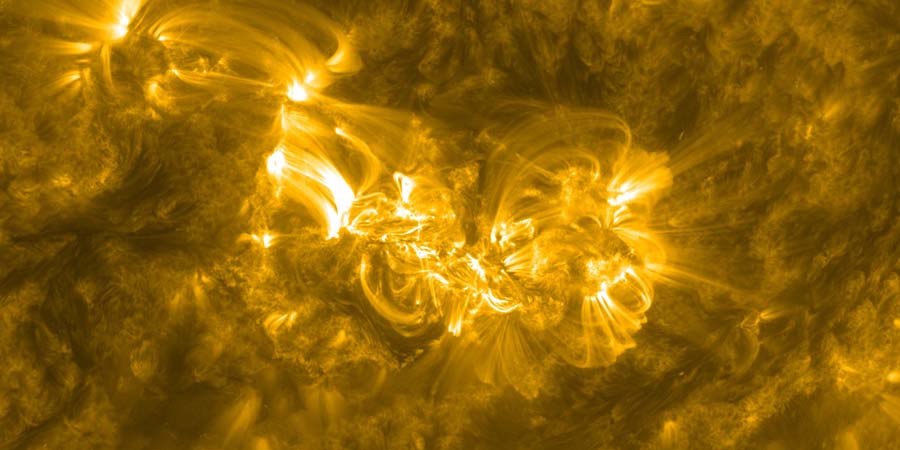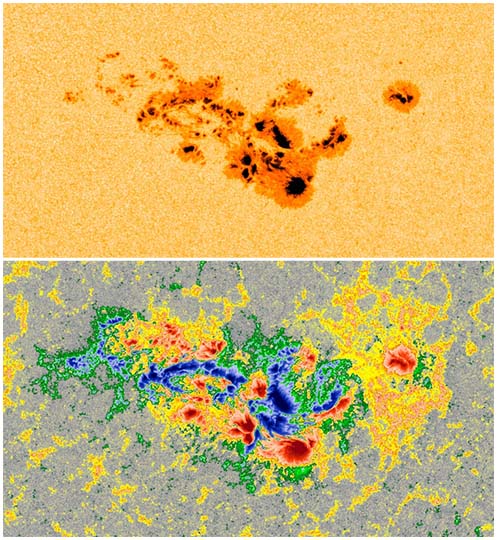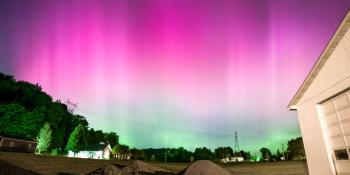Sunspot region 3664, major flares and CMEs!
Wednesday, 8 May 2024 18:09 UTC

What a day! Sunspot region 3664 and 3668 have merged into a very complex sunspot cluster which has been producing a ton of M-class activity and even two X1 events. The first of these two X-class solar flares was unremarkable but the second X1 solar flare produced a coronal mass ejection with an earth-directed component but more on that later. We are also going to take a look at an M-class event which also produced a coronal mass ejection. A lot to go over today!
First we take a look at sunspot regions 3664 and 3668 which have become an incredibly complex cluster of sunspots which are almost hard to keep apart. I mean where to start? Large sunspots, multiple magnetic delta structures... It is not strange that this region has been producing some major flares today and there remains a very high chance of M-class activity from it and even strong X-class solar flares peaking at X5 or maybe even higher are not out of the realm of possibility. Keep an eye on these sunspots which together form one of the most complex sunspot region of the current Solar Cycle.

Two earth-directed coronal mass ejections
Out of all of the flares that sunspot region 3664 produced today we will take a closer look at two of them. The X1.0 solar flare which peaked at 05:09 UTC and an M8.6 solar flare that peaked at 12:03 UTC. Both of these solar flares produced asymmetrical full halo coronal mass ejections that will impact Earth. The first coronal mass ejection from the X1.0 solar flare has been modeled and expected to arrive late on Friday, 10 May. The M8.6 coronal mass ejection was slightly fainter compared the X1.0 coronal mass ejection but we do expect it to catch up or arrive slightly after the X1.0 coronal mass ejection arrives. What does that mean for the anticipated impact at Earth? Hard to say. Sometimes it causes trouble in interplanetary space and the impact becomes weaker than expected as the two coronal mass ejections merge with each other but sometimes the impact becomes much stronger. It is basically impossible to say but one thing we can guarantee is that you want to be right here on SpaceWeatherLive when these coronal mass ejections arrive to see how the situation plays out. For now, the official forecast from the NOAA SWPC calls for moderate G2 geomagnetic storm conditions on Saturday, 11 May. A look at the two coronal mass ejections as imaged by SOHO/LASCO can be found below.
Two earth-directed asymmetrical coronal mass ejections were launched today due to the M and X-class activity from sunspot region 3664. Both are expected to arrive late on 10 May or early on 11 May. Moderate G2 geomagnetic storm conditions are possible after they arrive. More… pic.twitter.com/7hdyKSHpMN
— SpaceWeatherLive (@_SpaceWeather_) May 8, 2024
Thank you for reading this article! Did you have any trouble with the technical terms used in this article? Our help section is the place to be where you can find in-depth articles, a FAQ and a list with common abbreviations. Still puzzled? Just post on our forum where we will help you the best we can!
Latest news
Latest forum messages
Support SpaceWeatherLive.com!
A lot of people come to SpaceWeatherLive to follow the Sun's activity or if there is aurora to be seen, but with more traffic comes higher server costs. Consider a donation if you enjoy SpaceWeatherLive so we can keep the website online!

Space weather facts
| Last X-flare | 2024/05/15 | X2.9 |
| Last M-flare | 2024/05/19 | M2.5 |
| Last geomagnetic storm | 2024/05/17 | Kp6 (G2) |
| Spotless days | |
|---|---|
| Last spotless day | 2022/06/08 |
| Monthly mean Sunspot Number | |
|---|---|
| April 2024 | 136.5 +31.6 |
| May 2024 | 157.7 +21.2 |
| Last 30 days | 171.7 +57.7 |


